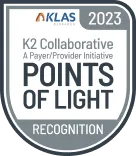Webinar
/
Round Table 149: Coding Social Determinants of Health and what are the Implications
Date
Time
August 16, 2022
10:00 am
EST
Meet the speakers
About the webinar
SDOH codes in categories Z55-Z65 describe patients with potential health hazards related to socioeconomic and psychosocial circumstances. Looking to better understand the impact of the SDOH codes, and how to assign them? Then this webinar is for you.

Achieve your boldest ambitions
Explore how Datavant can be your health data logistics partner.
Contact us



.svg)









